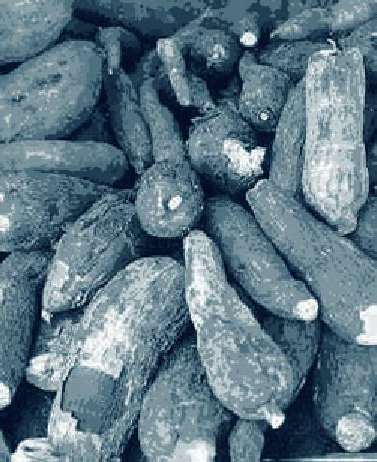Environmental Engineering Reference
In-Depth Information
allows a more direct focus on administrative and project skills. Capacity building at the
macro-level with institutions such as governments and companies, may also be productive.
Maintaining the Natural Resource Base
Maintenance and development
of the original economy is
necessary to maintain the
stability of the local community,
given that most residents will not
be able to work in mining.
At most mining sites, the original economy is natural, resource-based primary production -
agriculture, forestry, and i sheries. Mining and associated activities will constitute the new
land use in some areas (temporarily or permanently), and a portion of the labour force will
become mine workers. Maintenance and development of the original economy is necessary
to maintain the stability of the local community, given that most residents will not be able
to work in mining (see also Case 13.12). After mine closure, a return to a natural, resource-
based economy is usually the only option available to the community. Sustaining and if
possible enhancing the resource base is important whether mine life spans 5 years or 50
years, and this should serve as a central principle for CD programmes.
Aiming for Self-Financing Programmes
Leveraging refers to using community development funds to create projects that stimulate a
higher level of economic activity than would otherwise occur. While not all community devel-
opment programmes generate a proi t (or break even), those that do so enable the transfer
of ownership and management to a local private sector or co-operative entity. Direct transfer
of funds, either as grants or as loans, provides seed money for other self-sustaining projects.
A good example would be programmes in which the scrap materials and wastes produced
by the mining operation are used for locally based industry and trade. Even better examples
are commercial agriculture, horticulture, animal husbandry, and aquaculture projects set up
to provide the mine workers with a portion of their food supply (
Case 15.1
). While neither of
CASE 15.1
Harvesting Sunshine for Biofuel
Cassava is a starch-rich tuber that grows well on
degraded land and requires relatively little fertilizer
and water inputs. Apart from its traditional role as a
food crop, Cassava has increased its value as a fuel
commodity. Its starch is already being used to pro-
duce ethanol on a large scale in Brazil, Nigeria, China,
and Thailand. The technology for converting cassava
into the biofuel Ethanol is being perfected and the
technology is affordable.
The cassava business has caught the attention of
some mining companies. Planting and harvesting
cassava to produce biofuel consumed by the mine
is an interesting community development concept:
(1) cassava has the advantage of being relatively
undemanding, and will thrive on poor and even
tired soils, where few other crops will grow;
(2) there is the capacity building aspect in preparing
communities to enter the cassava business; (3) while
the main focus is on the roots and stems, leaves
are a supplementary output with a potential cash
value; (4) during operation the mine provides a
secure market; (5) by purchasing biofuel from
host communities the mine reinvests in the local
economy; and (6) the demand for biofuel is likely
to remain after the mine is gone. By that time the
host communities have established a solid cassava
business with good organization and understanding
of the specifi c conditions and scale of operation.









Search WWH ::

Custom Search